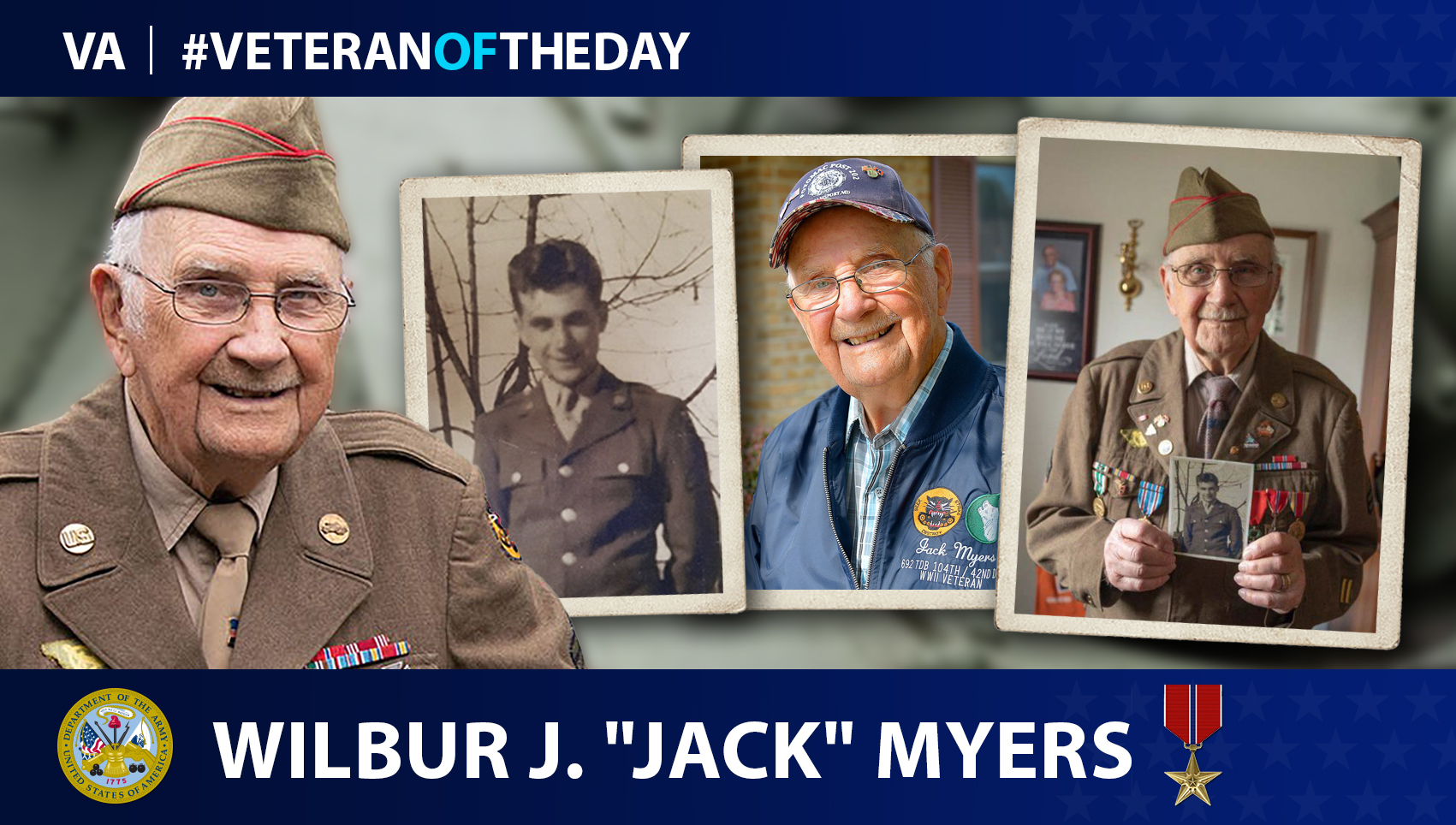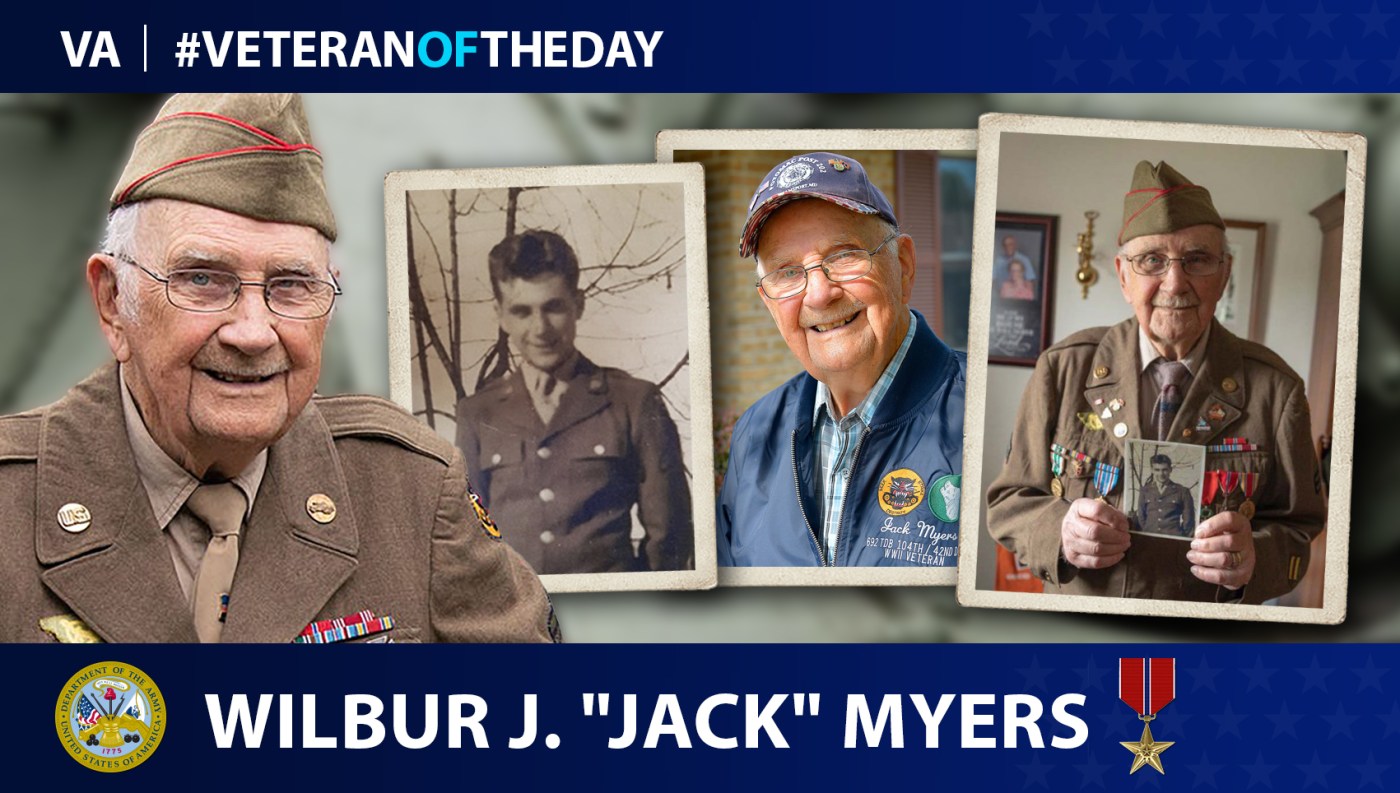
Today’s #VeteranOfTheDay is Army Veteran Wilbur Jackson “Jack” Myers, who served as an antitank gunner during World War II.
Wilbur Jackson “Jack” Myers was born in June 1923 in Williamsport, Maryland, as one of 13 children. In 1930, he joined the Civilian Conservation Corps, a government work relief program founded during the Great Depression, and he married Kathryn “Katie” Kendle in 1942.
Myers was drafted in 1943 and left Hagerstown, Maryland, on a railroad car with around 45 other men from Washington Country. He was examined in Baltimore, Maryland, given a uniform and sent to Camp Hood in Texas for basic training.
Myers joined the 692nd Tank Destroyer Battalion and traveled to Europe in September 1944. The battalion departed from New York and traveled in a convoy to Cherbourg, France. In an interview, he explained, “We were protected with destroyers. Every now and then they would drop depth charges to scare submarines away.”
Myers served as an antitank gunner and eliminated machine gun nests, observation posts and vehicles. He operated a three-inch anti-tank gun and later worked in a 40-ton M36 tank destroyer. The battalion supported the 104th Infantry Division in Holland and advanced to Aachen, Germany, and the Siegfried line before joining Patton’s Army at the Battle of the Bulge. During the battle, the battalion served as defense along the Ruhr River.
Myers’ left hand was injured due to an accident with a captured German pistol on March 20, 1945, and he spent the remainder of the war in England. He was awarded a Bronze Star for his service.
Returning home, he owned and operated a business, The Custom Shop, where he upholstered and refurbished furniture. After six years, he sold his business and worked as a salesman at Martin’s Furniture until his retirement in 2000. His wife, Katie, died of Alzheimer’s after 69 years of marriage. He has three sons and is a grandfather, great-grandfather and great-great-grandfather. He married Mary Jo Kemper in 2014, and the couple lives together in Hagerstown, Maryland, today.
Myers did not speak about the war for 50 years due to “battle fatigue,” which is now referred to as PTSD. Three of the five members of his squad were killed. He describes the loss, “I was with the same outfit the whole time I was in there, so I had been with them for two years. To lose a buddy like that – it’s not easy, very emotional. It brings back memories.”
Myers found an opportunity for healing though several trips to Europe. The trips, organized through the nonprofit Best Defense Foundation, allowed Myers to return to Germany for the 70th anniversary of the Battle of the Bulge.
We honor his service.
Nominate a Veteran for #VeteranOfTheDay
Do you want to light up the face of a special Veteran? Have you been wondering how to tell your Veteran they are special to you? VA’s #VeteranOfTheDay social media feature is an opportunity to highlight your Veteran and his/her service.
It’s easy to nominate a Veteran. Visit our blog post about nominating to learn how to create the best submission.
Veterans History Project
This #VeteranOfTheDay profile was created with interviews submitted to the Veterans History Project. The project collects, preserves, and makes accessible the personal accounts of American war Veterans so that future generations may hear directly from Veterans and better understand the realities of war. Find out more at http://www.loc.gov/vets/.
Writer: Aubrey Benton
Editors: Alexandra Kaiser, Theresa Lyon
Researchers: Jake Stanard
Graphic artist: Kiki Kelley
Topics in this story
More Stories
This week’s Honoring Veterans Spotlight honors the service of Army Veteran David Bellavia, who received a Medal of Honor from the Iraq War’s deadliest operation, the Second Battle of Fallujah.
This week’s Honoring Veterans Spotlight honors the service of Army Veteran Scotty Hasting, who served in Afghanistan.
This week’s Honoring Veterans Spotlight honors the service of Army Veteran Roy Sheldon, who served in 97th General Hospital in Frankfurt, Germany.







We honor the service of Wilbur Jackson “Jack” Myers.